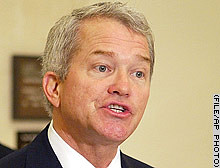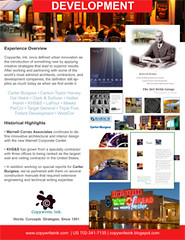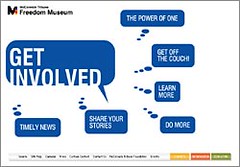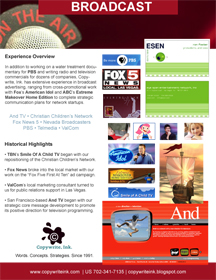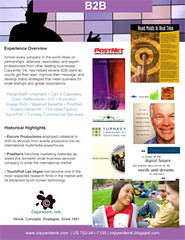The first e-mail rule I tell every client or public relations professional is: don't send it unless you would be proud to see it on CNN.
Unfortunately for Rep. Mark Foley, he was never a client or a student. CNN reports he resigned today after a former congressional page questioned e-mails Foley had sent to him.
Foley apparently sent the e-mails in August 2005, when the male page was 16 years old.
"Today I have delivered a letter to the speaker of the House informing him of my decision to resign from the U.S. House of Representatives, effective today. I thank the people of Florida's 16th Congressional District for giving me the opportunity to serve them for the last twelve years; it has been an honor," said Foley. "I am deeply sorry and I apologize for letting down my family and the people of Florida I have had the privilege to represent."
In the e-mails, which were obtained by Washington-based Citizens for Responsibility and Ethics in Washington (CREW), Foley discussed a second page, saying "I just emailed [him]... hes such a nice guy... acts much older than his age... hes in great shape... i am just finished riding my bike on a 25 mile journey now heading to the gym... whats school like for you this year?"
Foley then asked the page for a picture.
The young man, who forwarded the e-mails to another congressional staffer, called the e-mails "sick, sick, sick."
"Maybe it is just me being paranoid, but seriously. This freaks me out," the page wrote in the e-mails obtained by CREW.
A spokesman for Foley told CNN the congressman acknowledged he had an e-mail exchange with the former page but flatly denied that it was anything inappropriate.
Of course, if there was nothing inappropriate, one has to wonder how he let his family and the people of Florida down.
I'm not going to add any speculation on the implications, but limit this to the aforementioned lesson. There is no such thing as private communication anymore, especially in e-mail or on voice mail (as State Sen. Dina Titus recently learned in Nevada).
Unfortunately for Rep. Mark Foley, he was never a client or a student. CNN reports he resigned today after a former congressional page questioned e-mails Foley had sent to him.
Foley apparently sent the e-mails in August 2005, when the male page was 16 years old.
"Today I have delivered a letter to the speaker of the House informing him of my decision to resign from the U.S. House of Representatives, effective today. I thank the people of Florida's 16th Congressional District for giving me the opportunity to serve them for the last twelve years; it has been an honor," said Foley. "I am deeply sorry and I apologize for letting down my family and the people of Florida I have had the privilege to represent."
In the e-mails, which were obtained by Washington-based Citizens for Responsibility and Ethics in Washington (CREW), Foley discussed a second page, saying "I just emailed [him]... hes such a nice guy... acts much older than his age... hes in great shape... i am just finished riding my bike on a 25 mile journey now heading to the gym... whats school like for you this year?"
Foley then asked the page for a picture.
The young man, who forwarded the e-mails to another congressional staffer, called the e-mails "sick, sick, sick."
"Maybe it is just me being paranoid, but seriously. This freaks me out," the page wrote in the e-mails obtained by CREW.
A spokesman for Foley told CNN the congressman acknowledged he had an e-mail exchange with the former page but flatly denied that it was anything inappropriate.
Of course, if there was nothing inappropriate, one has to wonder how he let his family and the people of Florida down.
I'm not going to add any speculation on the implications, but limit this to the aforementioned lesson. There is no such thing as private communication anymore, especially in e-mail or on voice mail (as State Sen. Dina Titus recently learned in Nevada).






